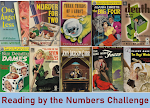Here are this week's foreign correspondents:
Brad @ Ah Sweet Mystery Blog: "The English Village, in Translation"
Moira @ Clothes in Books: "Tuesday Night Bloggers: Foreign Mysteries (Appointment with Death by Agatha Christie)"
Kate @ Cross Examining Crime: "Pack your bags, we're off somewhere warmer..."
JJ @ The Invisible Event: "In Media Res: Case Closed vols. 1-5 (1994) by Gosho Aoyama"
Neeru @ A Cup of Hot Pleasure: "Initial Impressions: Malice by Keigo Higashino"
*************************************
 And for my contribution, I shall take us to Japan via Yukito Ayatsuji's The Decagon House Murders. The book is
a daring homage to the Golden Age detective novel and, most
particularly, to Agatha Christie's classic impossible crime novel, And
Then There Were None. It also represents a resurgence of the classic
crime novel in Japan. As is stated in the notes at the end of the 2015
English translation by Ho-Ling Wong:
And for my contribution, I shall take us to Japan via Yukito Ayatsuji's The Decagon House Murders. The book is
a daring homage to the Golden Age detective novel and, most
particularly, to Agatha Christie's classic impossible crime novel, And
Then There Were None. It also represents a resurgence of the classic
crime novel in Japan. As is stated in the notes at the end of the 2015
English translation by Ho-Ling Wong:The publication of The Decagon House Murders in 1987 was seen as a mile stone in detective fiction and the start of the shin honkaku movement. The term...now symbolises the rebirth of the classic puzzle-plot novel with a new twist, audacity: pushing the bounds of the puzzle-plot novel while adhering to its fair-play rule.
Ayatsuji takes the familiar trope of a group of people stuck on an island with no escape from a murderer, transports it to Japan, and gives it a twist. This time, unlike the Christie novel, the people aren't strangers brought together by an unknown host--they are a group of students who are all members of a mystery club at a local university. They are so immersed in their hobby that they have each taken names from classic detective fiction: Agatha, Orczy, Van Dine, Leroux, Ellery, Carr, and Poe. The island and Decagon House was the site of a ghastly murder (possibly murder-suicide) just six months before and it appeals to their sense of mystery. When the uncle of one of the club members buys the property, the club takes advantage of their connections to plan a week's excursion. They explicitly tell the fisherman who runs them out to the island on is boat not to come back for a week.*
"So I really don't have to check up on ya even once?" the fisherman asked the six as they set foot on the dangerously creaking pier. "Don' think phones work here."
Van Dine meets the six--he had come ahead to bring the supplies and prepare the lodgings and they settle down for their stay. Initially, they enjoy exploring the grounds and wondering about the details of the crime six months before. But it isn't long before they are involved in a very personal murder mystery of their own. Someone begins killing the club members--one by one. Has one of their own gone mad or is there someone unknown hidden on the island? Clues begin to point to someone connected to the previous murders. Did that killer manage to hide on the island all this time? Ayatsuji manages to produce an unexpected answer that is at once surprising and highly satisfying.
This is a highly enjoyable puzzle-plot mystery which plays out well in its foreign (to me) setting. There are details of Japanese culture and custom that are integral to the plot and which give it a different feel from the Christie classic. Since it is focused on the puzzle aspect, the characterization suffers a bit, but not enough to keep mystery fans from enjoying themselves. The solution to the mystery is quite audacious and, while I kept wondering if perhaps X might be the killer, I couldn't figure out how it would be possible. The clues are there if you just know how to interpret them. The motive isn't quite as clearly given, but there are subtle hints.
*I made this note to self after finishing the book: If I'm ever invited to a secluded island for an extended stay--even by people I think I know well--make sure somebody will be checking up on us regularly (like--every. single. day.). AND make sure I bring along an emergency pack that contains an easily portable, inflatable boat for getting off the island ASAP if a madman starts knocking off the guests.































5 comments:
I have yet to read a Japanese writer. I read only good things about them, and as I read your post here, I decided to definitely read a couple next year. 'The Decagon House Murders' sounds great, and I love 'And Then There Were None'. Seems like a good start.
Oh I want to read this right now. I also read a novel by Japanese author Keigo Higashino: Malice and am submitting my post on it for the Tuesday Night Blogger's meme.
Here's the link:
http://inkquilletc.blogspot.in/2016/12/initial-impressions-malice-by-keigo.html
Thanks.
Thanks Bev for including my post. There's a problem in the list however as the links for the second and third entries take you to the same post.
thanks, Neer! I've fixed it.
I very much enjoyed this puzzle mystery also. I hope there will be more. I love a mystery where I get to the end and I'm compelled to go back to find the clues that I missed. The only other Japanese writer I've read is Masako Togawa, a long time ago. She was called the P.D. James of Japan at one time. I liked her books.
Post a Comment